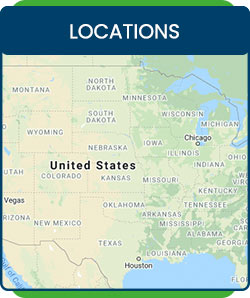Why Staying Safe May Come Down to Sleep
Want to be sure you are rested for your final road trip this summer? Visit Koala® Center For Sleep & TMJ Disorders we have Multiple Locations Across the US. Call us today or request an appointment online. Serving Patients From All Over the USA. Locations in Bloomington IL, Peoria – Dunlap IL, El Paso TX and Wausau WI.


As the end of summer approaches, many Americans will be packing up their cars for one last family vacation before school begins again and cooler temperatures return. While there are many elements that go into planning a successful road trip, one of the most important considerations is safety. According to data from the Department of Transportation, summer, not winter, is the most dangerous season on the roads. The increased risk is due to increased road congestion from vacationers and tourists as well as road construction. As such, it is more important than ever to be alert while driving during the summer.
Each year the National Highway Traffic Safety Administration (NHTSA) issues safety tips for summer drivers, which include staying off of your phones while driving, taking frequent stops to stretch, eat and drink, and changing drivers or stopping overnight if you’re feeling tired or drowsy. This last tip is especially important because drowsy driving is a major contributor to vehicular crashes. According to the NHTSA, it accounts for at least 100,000 motor-vehicle crashes and over 1500 deaths each year.
Drowsy driving occurs when a driver is too tired to stay awake or alert. While the driver may not actually fall asleep, he or she may show slowed reactions times and impaired thinking as well as a lack of focus. Accidents related to drowsy driving generally occur late at night or early in the morning when our bodies are used to sleeping, notes the American Academy of Sleep Medicine (AASM). The CDC recommends paying attention to the warning signs of drowsy driving, which include yawning or blinking excessively, drifting in and out of your lane, or missing an exit. If you notice any of these signs, please take time to either rest or change drivers.
While anyone may experience sleepiness at the wheel, there are certain people who are more at risk. The American Sleep Apnea Association (ASAA) notes that these include being a shift worker, taking certain medications, or having a sleep disorder. One sleep disorder that has been linked to drowsy driving is Obstructive Sleep Apnea (OSA).
OSA is a condition characterized by complete and partial airway obstructions, which can occur when the tongue and muscles relax during sleep, the lower jaw falls back toward the throat or the airway becomes blocked. A typical sequence of OSA occurs when a person stops snoring and is silent for seconds or minutes. The brain may cause the body to jerk in an attempt to wake the sleeper so breathing will resume. The silence may end with a loud snort, cough or gasp. This causes the sleeper to wake briefly and begin breathing. Once asleep again, the muscles relax and the airway becomes blocked again. This cycle can occur hundreds of times per night. Additional warning signs of OSA may include headaches, high blood pressure, daytime sleepiness, insomnia, diabetes, depression and more.
Symptoms such as daytime sleepiness can lead to an increased risk of vehicular crash. As such, the ASAA recommends that those who are excessively tired due to a sleep disorder like OSA should not drive, as they are a risk to themselves and other drivers or pedestrians. However, if the sleep disorder is treated, there is no added risk for drowsy driving and motor-vehicle crashes.
If you believe a disorder such as OSA may be making you sleepy on the road, consider asking your physician for a sleep study, which can determine whether or not you have OSA and what the severity is. If you are diagnosed, there are a number of treatment options available, including lifestyle changes, surgery, Continuous Positive Airway Pressure (CPAP) and Oral Appliance Therapy. Oral Appliance Therapy works to hold the jaw in a position that allows the airway to remain as open and firm as possible during sleep, thus preventing snoring and interruptions in sleep. At the Koala® Center For Sleep Disorders in City, State, Dr. Name is trained to treat OSA with Oral Appliance Therapy.
For more information contact the Koala® Center For Sleep Disorders in City, State at Phone Number or website. Dr. Name provides treatment for Snoring, Sleep Apnea, and Temporomandibular Joint Disorder (TMD) using comfortable oral appliance therapy.




